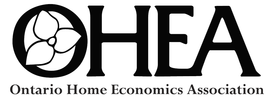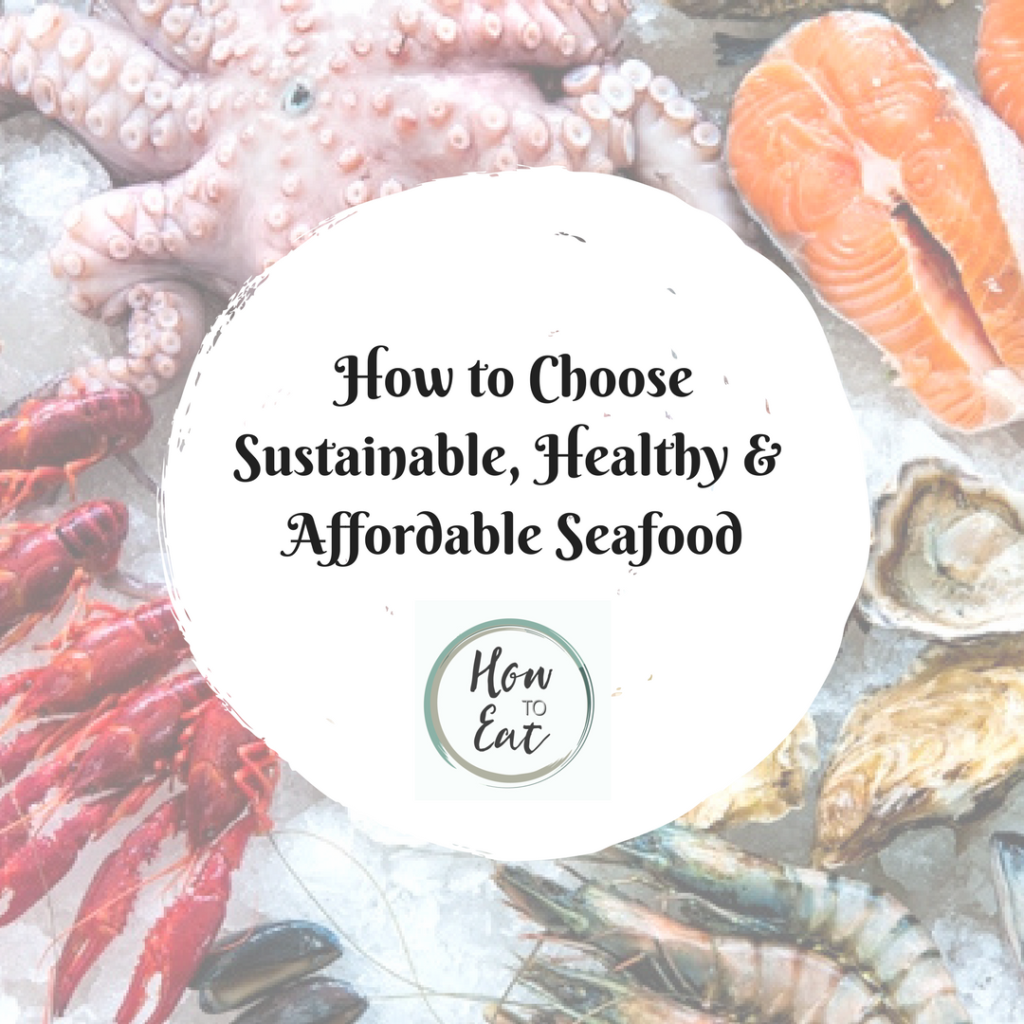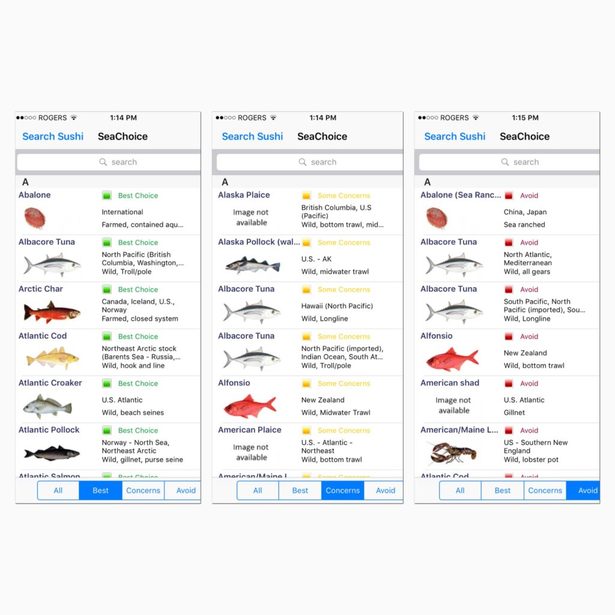|
By: Erin MacGregor, RD & P.H.Ec of howtoeat.ca Click here to see the original blog post! Choosing sustainable, affordable and healthful seafood can seem crazy hard. This is a big fat complicated topic, friends. My head was spinning at the number of resources I reviewed while trying to find the best information for you. I’m going to try and keep this as simple and as transparent as possible, and in the end I hope you find this was a practical resource to get you started in making the best choice for you and your family. The first question I asked myself was, “What are people thinking about when buying seafood?”. It turns out, a whole whack of stuff. And depending on who’s buying, the biggest priority is going to change. THE MOST COMMON PRIORITIES WHEN BUYING SEAFOOD
While these are in no particular order, it seems even for me the priority changes from day to day. Truthfully, I care about all of them. Let’s start with points 1. and 2. which we can file under everyone’s favourite buzzword: sustainability. Don’t get me wrong, I’m not mocking the use of this word. The fact that it’s even a trendy buzzword is awesome, but let me define it so we’re not just saying smart pants stuff without understanding it? SUSTAINABLE SEAFOOD Caught or farmed in ways that consider the long-term health of the harvested species, the well-being of the related habitat, as well as the livelihoods of fisheries-dependent communities. (disclaimer: This is 90% the def from Wikipedia, which I do not normally consider a go-to reputable resource, but I liked the language and I double-liked the fact that it also includes the human communities involved in fishing and harvesting.) In terms of sustainability, there are a few simple facts which illustrate how these should be a priority for you if they aren’t already. Roughly 90 per cent of the world’s fish stocks are now fully fished or overfished. This is a direct result of our increased demand for seafood, which has never been higher and shows zero signs of slowing down. I’m no mathematician, but this doesn’t add up. We’re in all out crisis mode here. Ninety percent. NINETY. Over the last several decades, we’ve turned to aquaculture (seafood farming) to fill the growing gap, which now makes up more than 50% of our seafood supply. While there have been strides made to improve practices, there is still a lot of sketchy stuff going on which negatively impacts environmental, animal and even human health. As I said, I won’t get into the nitty gritty here, but a shortlist of the questions that should be asked when looking for a sustainable seafood choice includes: What species? Where was it caught? What method and equipment were used? If farmed, is the system open or closed? Who are the labourers? Are they paid fairly? I would bet a large pile of cash my supermarket fish counter worker couldn’t answer these doozies. Fish mongers should be able to answer these questions for you, and I will always encourage you to support these types of speciality vendors if possible but I get this may not be the most realistic option for most. Thankfully, there are some pretty incredible organizations doing the work and making the job easier for us time-crunched consumers! CONSUMER FRIENDLY RESOURCES FOR CHOOSING SUSTAINABLE SEAFOOD SeaChoice is the Canadian partner of Seafood Watch, which operates out of the Monterey Bay Aquarium in the US and is a pioneer in seafood sustainability. These organizations work on making science-based recommendations that help consumers make ocean-friendly seafood choices from both fisheries and fish farms. Each have free smart seafood choice guides and apps which can direct you toward making sustainable choices using a three-tiered traffic light system of Red (avoid), Yellow (good alternative) and Green (best choice). If you’re a Canuck, SeaChoice is aimed at Canadian consumers. They also have a database specific to seafood used in sushi. These are excellent tools to use if you have the desire and time to learn more about the specifics of your seafood origin. These organizations do not however certify seafood (as in, put a helpful little consumer friendly label on the packaging). You can see how that might be a problem with the information I’ve presented in the image above where Albacore Tuna is listed in all three categories.
Certification is where the Marine Stewardship Council and the Aquaculture Stewardship Council come in. There are other smaller certifiers, however these are the world leaders and the ones I consistently come across at all the major supermarkets. You can find these certifications on frozen fish and in fresh counters. Each have standards which are at minimum, in line with Seafood Watch’s ‘good alternative’ (yellow) choice. Keep in mind there are plenty uncertified seafood options out there that are sustainable. You’ll just have to do a little more investigating before you know you’re making a good choice. IS SUSTAINABLE SEAFOOD MORE EXPENSIVE? Well, yes. In a way. If you’re buying a product that has been certified, that will cost the supplier. If you’re buying a product that is caught using a specialized method or equipment, same. If you’re buying from a country that enforces labour laws to ensure fair pay for workers, you’ll probably have to shell out a few more bucks. That being said, there are still plenty of affordable options, including fresh, frozen and canned varieties. Some of my favourite affordable and sustainable options include: Canned MSC certified tuna (yes, more expensive than your standard canned tuna, yet still about $2.00 per serving) Canned Wild Sockeye Salmon Farmed Rainbow Trout (I buy lots on sale, usually fresh, and freeze it) Live fresh Canadian mussels Farmed Arctic Char Farmed Tilapia (North American) HEALTH: OMEGA 3 FATTY ACIDS & MERCURY As you know, it’s How to Eat’s mantra to avoid talking about food in terms of numbers. We don’t want you scouring nutrition labels for grams of this, that or the other. We want you to choose food because it’s nourishing and delicious. So please, keep that in mind as you read the following information. OMEGA 3s Omega 3 fatty acids get a whole lot of press these days. Simply, they’ve been found to be beneficial for brain health (from child development all the way on up to old age), heart health and even joint health. All resulting from their anti-inflammatory properties (inflammation = bad, when it comes to health). Seafood is a really good source of Omega 3s, so if you could eat some, that would be super. Fatty fish (I also like to refer to these fish at ‘fishier fish’) contain more Omega 3s because, yup, they’ve got more fat. These include salmon*, mackerel, herring, Arctic char and rainbow trout. Almost all fish have some level of Omega 3s, though. Our advice? Eat fish. Any fish. That’s it. Once or twice per week if you can. (*Salmon is a tricky topic when it comes to sustainability. One that could use a blog post of it’s own. If you’re choosing wild caught salmon, you’re very likely making a sustainable choice. If it’s farmed, maybe not. To keep it simple, if you are going to buy Atlantic Salmon (which is always farmed) try choosing an MSC certified brand or buy it from somewhere you can learn about its origin. Many Canadians are supported by the salmon farming industry and it’s important to me to support our producers, so I will continue to evaluate what’s happening in salmon farming and make the best choice for me). MERCURY A very quick note on this! Mercury accumulation happens over time in larger species of fish. If you eat fresh/frozen tuna, shark, swordfish, marlin, orange roughy and escolar, you’ll want to see Health Canada’s advisory for guidelines around your intake, especially if you’re pregnant/breastfeeding or eat these fish with your children. Practically speaking, sushi grade tuna is likely the only fish of concern for most people. If you eat lots of sushi, take note of the guidelines OK? Canned tuna gets a lot of bad mercury press too, but unless you’re a pregnant/ breastfeeding woman or a child, and eating a lot of canned Albacore tuna, the benefit of eating tuna outweighs the potential for harm. CANNED ALBACORE (WHITE) TUNA ADVICE (DOES NOT APPLY TO CANNED LIGHT TUNA): 1 SERVING = 1/2 CAN TUNA
THE BOTTOM LINE The choices you make about fish, seafood and food in general is deeply personal. This was not meant to be preachy or to push you in a direction you’re uncomfortable with, but to give you more information about the food you’re buying. I’ve scratched the surface on many important issues here in an effort to get you thinking a little more about how your choices make an impact. Dara and I want you to feel happy, comfortable and safe about your food choices. If this tiny bit of information can help you do that in any way, YAY! Erin MacGregor of howtoeat.ca
0 Comments
Your comment will be posted after it is approved.
Leave a Reply. |
The Ontario Home Economics Association, a self-regulating body of professional Home Economists, promotes high professional standards among its members so that they may assist families and individuals to achieve and maintain a desirable quality of life. Categories
All
Archives
April 2024
|
|
Subscribe to our mailing list
|
|
Unsubscribe from our mailing list
|
Copyright © 2023 Ontario Home Economics Association (OHEA). All Rights Reserved.




 RSS Feed
RSS Feed